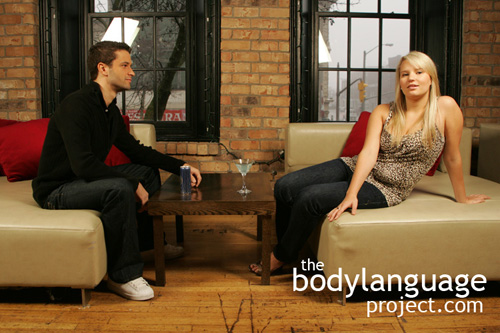
Eyes that wont make contact or seem to dart around as if they are fabricating stories can give liars away.
Shifty eyes, where the eyes dart all over the room to focus on anything but someone else’s eyes, is habitually associated with lying. However, as we learned previously, most practiced liars hold gaze even more strongly than in normal situations. In a study that looked at seventy-five countries, it was found that avoidance of eye contact was named as a lying trait in every single one of them. It is also frequently named first as a tell, and was named by old and young people alike. This trend exists cross culturally, despite any supportive scientific findings. People will stereotype liars as having shifty posture, self touching, appear nervous, have broken speech and so forth, but it is the belief that “they can’t look you in the eye” that is first and foremost on the tongue of all human lie detectors throughout the world! I suppose it would be less fascinating if that trait actually did predict lying, but it doesn’t. It’s simply a widespread belief that is passed down from generation to generation.
With regards to the general public who hold strong ideas about what a liar looks like, be sure to avoid gaze avoidance! Looking away for long periods of time, especially while talking, shifty eyes as mentioned, or using “stammering eyes”, which is the action of keeping the eyes closed for prolonged periods of time have all been noted as giving liars away. Despite widespread beliefs about how liars refuse to look other people in the eye, there is little empirical evidence to suggest its truth. Gaze avoidance might be more closely associated with the intent of appearing more subordinate, or to reduce anxiety and intensity so as to diffuse the situation.
Shutting out the outside world with stammering eyes can be a strong turn-off to other people, as can eye gaze avoidance which is probably why people universally attribute bad eye language to dishonesty. Negative impressions can stem from poor eye contact, even coming from the most honest and trustworthy people especially when it is the desire of others to label someone a liar for their own interest or purpose. It is a well known fact that when people hold specific beliefs they discount information that disproves their ideas, and actively seek out information that support it, some of which doesn’t exist in ready made form. To the more astute, it will come as obvious that reading bad eye language can help us reduce the creation of false impressions about others. Just because someone has unusual eye patterns does not mean that a person is lying, but chances are good that if you use bad eye language, or see someone else use bad eye language, you and they will be classified as untrustworthy.
The final aspect related to eye language worth mentioning is pupil dilation. Under stress or arousal of any kind, the pupils expand so as to allow more light in. This can include stress and fear due to lying, or any other fearful situations for that matter, but does not discount the stimulus of seeing something particularly attractive, as this too causes pupil dilation. By placing a suspect in the hot seat it is possible to gauge what level of fear he has with regards to accusations because it eliminates the confusion that outside stimulus creates larger pupils. However, like all lying language, pupil dilation is due to stress, which can result from being put in the hot seat! It is the gauging of pupil size from baseline that tells us something useful. Talking about something neutral like what they did last week on a random day, then switching to something more questionable like whether or not the stole office supplies is a great way to measure pupil differences as well as other lying language.
While we expect a liar to be more stressful overall, this isn’t always the case as has been one of the reoccurring themes in this chapter. However, if we wish to fool others, or maintain our innocence in their eyes, we should try to remain relaxed thereby giving off few or no negative cues.





